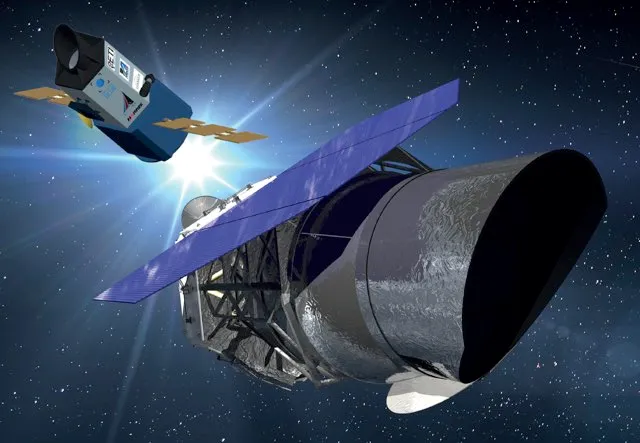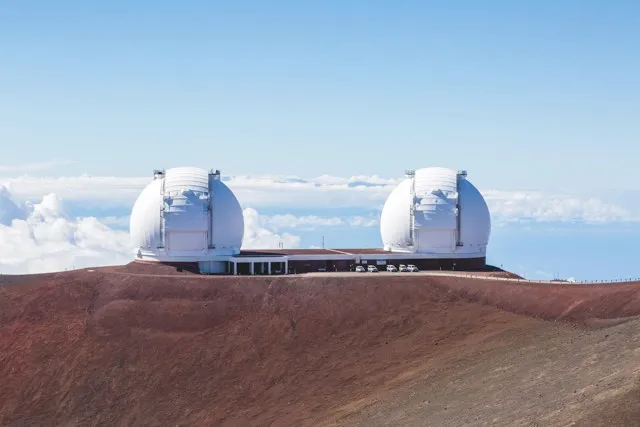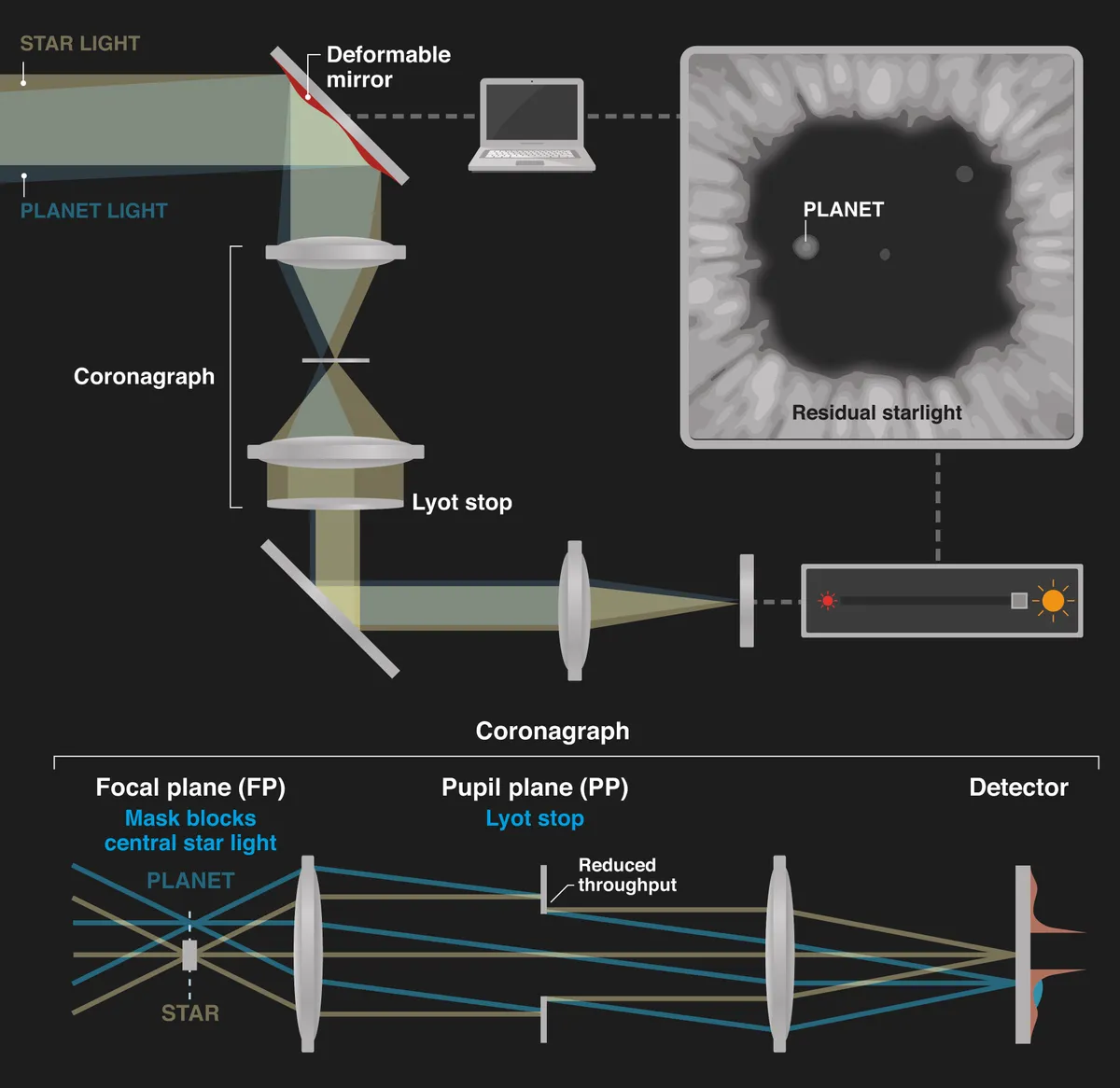Christmas, 1968. Three men were in orbit around the Moon, as far away from Earth as anyone had ever gone. They thought the magnificent desolation of the lunar landscape was the most stunning thing they were going to see during their mission. But they were wrong.
On their fourth orbit, astronaut Bill Anders saw Earthrise above the Moon’s horizon. He photographed the moment and in doing so gave the world one of the most iconic images of the space age. This picture of the seemingly fragile blue planet Earth subsequently became a symbol to represent both the environmental movement and the wonders of space exploration. Now, a group of privately funded astronomers and engineers want to recreate that act by taking a new picture of another blue planet – one around another star.
Blue sky thinking
DubbedProject Blue, the mission aims to build and launch a space telescope with a single goal in mind: to image any planets in the habitable zones of the nearest Sun-like stars. If such planets were Earth-sized with oceans and atmospheres, then they could even “see Blue”, Project Blue’s term for finding a potentially habitable planet.
The mission is the brainchild of theBoldlyGo Institute. This not-for-profit organisation was founded by Dr Jon Morse, a former NASA scientist and White House science advisor, to investigate highly compelling scientific questions using private money from donors and crowd-funding initiatives. And there are few questions more compelling than whether there are other Earth-like planets around other stars.

The quest to find Earth-analogues, as these planets are known, began in earnest in 1995 when a pair of Swiss astronomers discovered 51 Pegasi b – the first extrasolar planet (or exoplanet) to be found around a Sun-like star. It was the size of Jupiter and not at all Earth-like, but it proved that planets were now in reach of our technological abilities.
In the decades since, more than 4,000 other exoplanets have been detected but hardly any have had their picture taken. The trouble is that planets do not generate any of their own light and instead simply reflect their star’s light. This makes them more than a billion times fainter than their parent star. Telescopes to date have been able to catch a few glimpses of large planets, but planets the size of Earth have remained impossible to image. Instead, astronomers have used indirect observations to infer the existence of the exoplanets.
Read more:
Most of the exoplanets found so far were detected using NASA’sKepler Space Telescope. Kepler tracked a star’s brightness, looking for the dip caused when a planet crossed in front of it. Its instruments were precise enough that it could see smaller rocky (also called terrestrial) planets but none of them have proved to be a twin to Earth. Although some grabbed headlines around the world for being similar, to date we have not found a true Earth-twin in the sense that it is an Earth-sized world in an orbit the size of Earth’s around a Sun-like star.
As luck would have it though, the nearest star system to the Sun contains two stars that could be extremely rewarding places to look.
Planet hunt
Alpha Centauri is made up of three stars in mutual orbit around each other. One of these, known as Proxima Centauri, is a red dwarf star and therefore considerably smaller and cooler than the Sun. Of the others, Alpha Centauri B is similar to the Sun and Alpha Centauri A is virtually identical. These are the stars that Project Blue will target.
Existing studies of these two stars show that large planets like Jupiter are not present. So if there are planets there, all they can be are Earth-sized worlds in Earth-like orbits. “That’s what we are going to test,” says Morse.

The project proposes a small space telescope. Its mirror is just 0.5 metres in diameter, which makes it about half the size of Kepler. Yet this should be big enough for Project Blue to take direct pictures of any planets as they move around their star because the spacecraft will use an instrument called a coronagraph. It will block out the light from the central star, allowing the much fainter planet to be seen.
Don’t expect anything spectacular, though. Any planet will appear as nothing more than a single pixel of light, similar to the image of Earth captured in 1990 by the Voyager 1 spacecraft from a distance of four billion miles. Despite its lack of aesthetic beauty, it would allow scientists access to unprecedented information about the planet.
“Monitoring the brightness and the colour of planets over time is what allows you to make maps of the surface,” says Dr Margaret Turnbull of the Carl Sagan Center for Research at The SETI Institute, California, and a member of the Project Blue team. “Are there oceans? Are there continents? Are there cloud patterns? Weather patterns? Seasons? If there are, all of those things should be reflected – literally – in the colour data and in the brightness of the planet over time.”
Earth, for example, looks bluer when we are looking at an ocean than at a continent, and it is brighter when we are looking at Antarctica.
Telescope tech
The simplicity with which the mission can be stated belies the technical challenge. No one has yet flown a coronagraph designed for taking pictures of Earth-like planets. Project Blue is working closely with NASA, which is planning a much larger mission called WFIRST (the Wide-Field Infrared Survey Telescope). It is designed to have the sensitivity of the Hubble Space Telescope but with a field of view 100 times the size and will include a coronagraph that Turnbull has been working on. Project Blue will use a lot of the ideas and technology being developed for WFIRST to provide an orbital test of how to use such an instrument to detect planets. This is why it is so important to devote the whole mission to exploring just one star system.
“Having continuous coverage is a big deal,” says Turnbull. “Staring at the same space for months or years at a time, then you can be sure you are going to detect any planet within that orbital range.”

It seems such an obvious thing to do that the question of why NASA isn’t already planning its own test mission is a natural one. As Morse explains, it all comes down to money. From 2007 to 2011, he was NASA’s director of the astrophysics division and towards the end of that tenure, he noticed a worrying trend. “If you look at the budget history of astrophysics at NASA, there is a big dip in the early 2010s,” he says.
This was clearly going to impact the number of missions the division could build. Yet at the same time, ground-based observatories such as the Keck telescopes and the forthcoming Large Synoptic Survey Telescope (LSST) were forging ahead, thanks to money from private investors. Both of those telescopes are general-purpose observatories that perform a wide variety of observations. Nevertheless, the sums of money involved opened Morse’s eyes.
“Those projects are on a budget level that is on a par with sophisticated satellites,” he says. So, he set up the BoldlyGo Institute as a vehicle for attracting private money to launch more space missions.
Project Blue fits perfectly into that vision. Morse hopes that the spacecraft can be built for around $50m and launched some time in the early 2020s for around $10m. If he pulls it off, the cost alone could be a game changer. NASA’s first planet finder, Kepler, cost $550m. The launch costs alone for its latest planet finder, The Transiting Exoplanet Survey Satellite (TESS) mission, which launched in April, were $87m. Yet according to the people behind Project Blue, the mission’s potential impact extends beyond mere budgets. It even extends beyond doing science.
Age of exploration
Project Blue speaks to what it means to be human, to that part of us that is restlessly curious to explore. “Project Blue is pure exploration. We are going into the unknown. We are looking at what is there,” says Turnbull. “I love the idea of simply exploring and going to see what is there.”
Morse echoes these sentiments. “It looks to the far future,” he says. “If we ever go to the stars, we will go to the closest place first.” And that means the Alpha Centauri system. Project Blue is literally looking for the targets that our great-great-etc. grandchildren may one day see with their own eyes.
- This article was first published in April 2018.
How it works: coronagraph

Project Blue will use a device called a coronagraph to take pictures of any planets around Alpha Centauri. A coronagraph is a device that blocks the bright light from a central object but allows the faint light from its surroundings to enter the telescope.
It was invented in the 1930s by French astronomer Bernard Lyot. He wanted to study the Sun’s faint outer atmosphere which became visible only during a total eclipse when the Moon blocked the Sun’s bright disc, so he designed and built a device that could mimic the action of the Moon and create an artificial eclipse inside his telescope. Since the Sun’s outer atmosphere is called the corona, Lyot’s device was christened a coronagraph.
Looking for exoplanets is another good example of wanting to see something faint next to something bright. Planets do not generate their own light, instead they simply reflect that given out by their parent stars. It has been compared to trying to see a firefly on the rim of a searchlight.
In space, coronagraphs have principally been used to view the Sun with spacecraft such NASA-ESA’s Solar and Heliospheric Observatory (SOHO) mission. The Hubble Space Telescope did include a coronagraph in its Near Infrared Camera and Multi-Object Spectrometer (NICMOS). In 2011, it was used by astronomers to take an image of the four exoplanets around star HR 8799. Taking repeated images of planets allows their motion around their star to be seen.
The NASA James Webb Space Telescope will also include a coronagraph in it Near Infrared Camera (NIRCam).
Follow Science Focus onTwitter,Facebook, Instagramand Flipboard